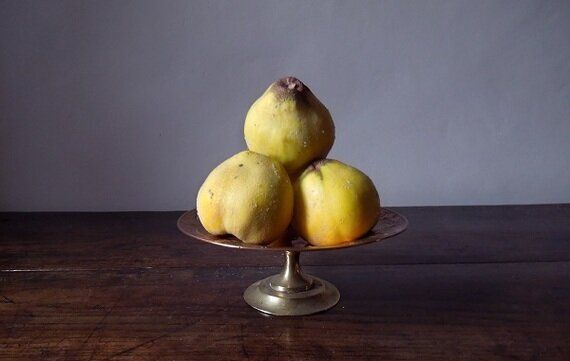
"They dined on mince, and slices of quince,
Which they ate with a runcible spoon."
The Owl and the Pussycat, Edward Lear
I still have four precious quinces sitting in a dish and I promised recently to give some recipes for these beauties so I thought it might be fun to give an entire menu featuring quince in some form. No mince though and you're on your own when it comes to sourcing a runcible spoon, although I'm told it resembles what we now call a "spork".
I've gone for a Spanish/Moroccan theme: today's recipe is a lovely Galician speciality, the Tarta de Santiago, a sort of Spanish take on the Bakewell Tart (sorry, Galicians). This version has a sweet pastry base filled with a layer of membrillo or quince paste and chopped almonds, topped with a citrusy frangipane.

The other dishes on the menu are small, tasty lamb kebabs or pinchos with a fruity quince aoli as a starter (recipe here); a pheasant and quince tagine (recipe here); and if you have any room left you can finish the meal with some sliced cheese (they'd use Manchego in Spain) topped with membrillo (recipe here).
Tarta de Santiago (serves 6-8)
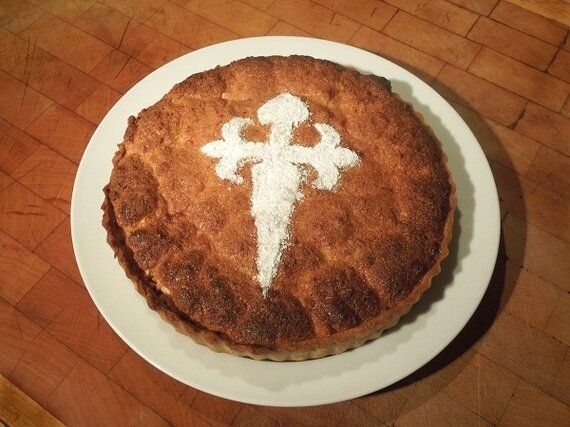
The Tarta de Santiago comes from Galicia in northern Spain and is named in honour of Santiago, or St James the Apostle, who is said to be buried in the city of Santiago de Compostela. For around 1000 years, pilgrims have trekked to the shrine and it still attracts 100,000 people a year.
I don't know whether they reward themselves with big fat wedges of Tarta de Santiago but they really should, it's delicious. It comes in two versions, either a cake or a tart and always features almonds, but this version also uses membrillo, or quince paste.
The tart is usually decorated with the sword or cross of St James in icing sugar, a handsome flourish. If you're as obsessive as me, you can download a template from the internet to make your own stencil. It's not a bad idea to practice on your pastry board first.
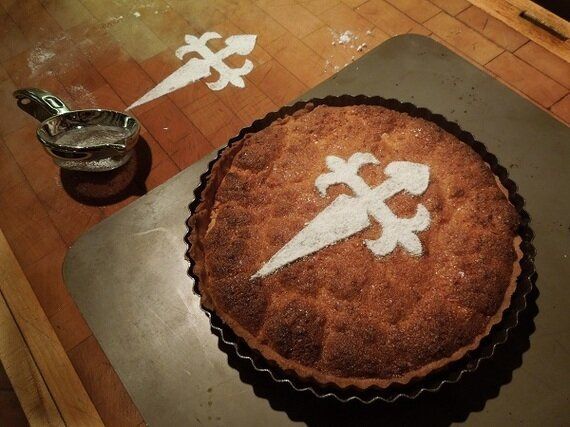
Ingredients for the pastry:
225 g plain flour
Pinch of salt
100g butter
15g white cooking fat
25g caster sugar
3 tbsp cold milk
For the filling:
300g membrillo/quince paste + 2 tbsp water
75g blanched almonds, chopped
For the topping:
125 g caster sugar
125 butter, softened
1 egg
125 g ground almonds
Zest of 2 oranges and 2 lemons
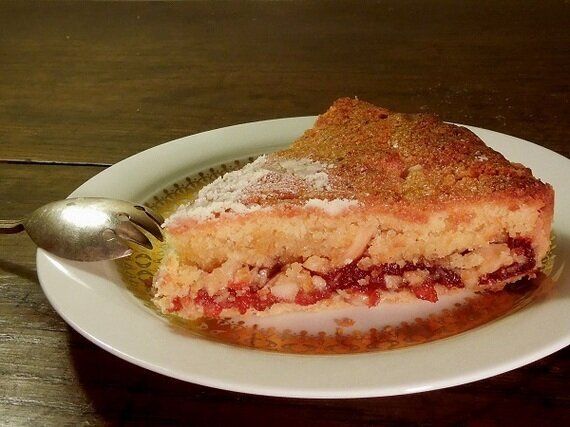
Runcible spoon optional
Method:
First make the pastry. Put the flour, salt and cubed fats in a food processor and whizz until it resembles soft breadcrumbs, or sift the flour and salt into a bowl and rub in the fats into the flour with your fingertips until you get the same result.
If using a food processor, transfer the mix to a bowl. Stir the sugar into the cold milk and sprinkle evenly over the surface, then stir it through with a dinner fork until the dough clings together and leaves the sides of the bowl clean.
Turn onto a lightly floured surface and knead a couple of times to get any cracks out, wrap in cling film and place in the fridge for 15 minutes.
Then roll out the dough on a lightly floured surface and use to line a 22/23 cm flan tin. Place in the fridge again to chill for 30 minutes.
Preheat the oven to 400F/200C/Gas Mark 6. Line the pastry case with foil, overlapping the edges, and fill with baking beans. If you haven't got baking beans, use uncooked rice or dried beans and keep them in a pot for next time.
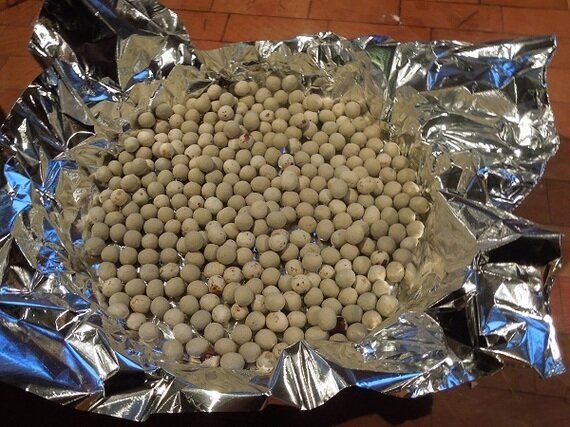
Bake blind for 15 minutes, then remove the beans and foil and cook for another five minutes to dry out the base. Set aside to cool.
In a small saucepan, gently warm the membrillo with two tablespoons of water until it is smooth. Spread it on the base of the cooled tart shell and sprinkle with the chopped nuts.
In a bowl, beat together the butter and sugar for the frangipane until light and fluffy. Crack in the egg and continue to mix, then mix in the ground almonds and orange and lemon zest.
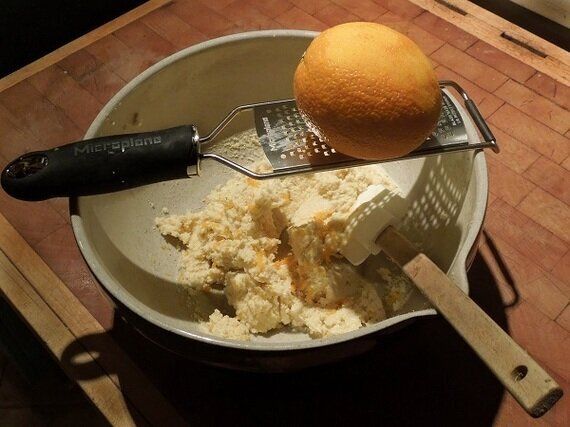
Spoon the topping evenly onto the tart shell. Bake in the oven for around 35 minutes or until golden brown. If the edges of the pastry are cooking too fast, cover them with foil.
When the tart is done, place your template of the sword of St James on top and dust with icing sugar. Best eaten tepid, I think, with a dollop of creme fraiche.